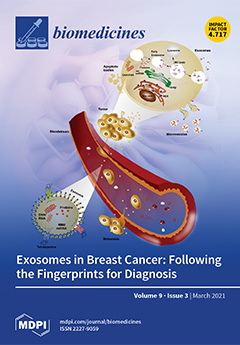During development, mesodiencephalic dopaminergic (mdDA) neurons form into different molecular subsets. Knowledge of which factors contribute to the specification of these subsets is currently insufficient. In this study, we examined the role of
Tcf4, a member of the E-box protein family, in
[...] Read more.
During development, mesodiencephalic dopaminergic (mdDA) neurons form into different molecular subsets. Knowledge of which factors contribute to the specification of these subsets is currently insufficient. In this study, we examined the role of
Tcf4, a member of the E-box protein family, in mdDA neuronal development and subset specification. We show that
Tcf4 is expressed throughout development, but is no longer detected in adult midbrain. Deletion of
Tcf4 results in an initial increase in TH-expressing neurons at E11.5, but this normalizes at later embryonic stages. However, the caudal subset marker
Nxph3 and rostral subset marker
Ahd2 are affected at E14.5, indicating that
Tcf4 is involved in correct differentiation of mdDA neuronal subsets. At P0, expression of these markers partially recovers, whereas expression of
Th transcript and TH protein appears to be affected in lateral parts of the mdDA neuronal population. The initial increase in TH-expressing cells and delay in subset specification could be due to the increase in expression of the bHLH factor
Ascl1, known for its role in mdDA neuronal differentiation, upon loss of
Tcf4. Taken together, our data identified a minor role for
Tcf4 in mdDA neuronal development and subset specification.
Full article






